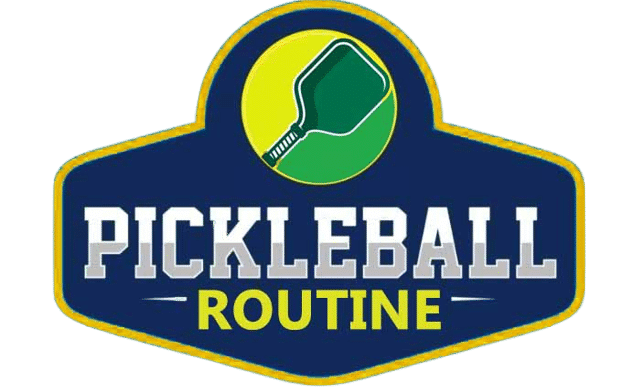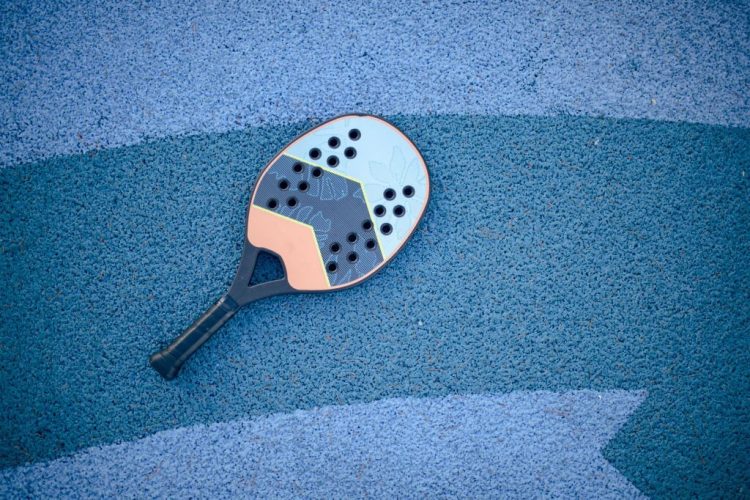Guess what? Pickleball paddles are like the heart and soul of this super fun and engaging sport!
Do you know what’s even cooler? Picking the right paddle can seriously level up your gameplay, turning you into a pickleball pro with all that control and power!
However, with a variety of options available, knowing the importance of having detailed information about the paddles is crucial for a successful pickleball experience.
So, let’s dive in and find out why these little wonders truly matter!
How to Choose Pickleball Paddles?
Choosing the correct pickleball paddle can be a difficult task because there are more than 20 brands out there to consider, also you should know the grip size, weight, and core material.
The easiest way to choose a paddle is to test them out, as different weights and grip sizes will affect your playing style.
It is very important to pick a paddle that is within your strength level and avoid those that are very heavy.
Most of the players are likely to prefer middleweight paddles (weighing between 7.0 and 7.4 ounces), but those who have playing experience in ping pong or racquetball may find lightweight paddles more suitable.
It is also important to consider the player’s personal choices for the paddle’s feel.
Factors to Consider When Choosing a Pickleball Paddle:
Selecting the ideal pickleball paddle can be a challenging task. It’s important to ensure that the paddle you choose matches your skill level and preferred playing style.
Here are some of the few crucial factors to consider when picking the best pickleball paddle for you:
Weight:
Pickleball paddles come in a variety of weights, ranging from light to heavy. Light paddles are an ideal choice for players who need more maneuverability, whereas heavier paddles are more suitable for power players.
Below is a table for Pickleball paddle weight recommendations based on different skill levels of players:
| Skill Level | Paddle Weight (oz) |
|---|---|
| Beginner | 7.5 – 8.2 |
| Intermediate | 7.3 – 8.0 |
| Advanced | 7.0 – 7.7 |
| Professional | 6.5 – 7.3 |
Grip Size:
The Grip size is equally important as well, you need to find a paddle that perfectly fits in your hand. The reason is if the grip is either too small or too big, it can negatively affect your game.
Material:
The most common pickleball paddle materials include:
- Wood
- Graphite/Carbon fiber
- Composite
Graphite paddles are ideal for spin and control, composite paddles offer a balance between power and control.
Whereas the Wood paddles give a more classic, feel with less power.
Composite Paddles:
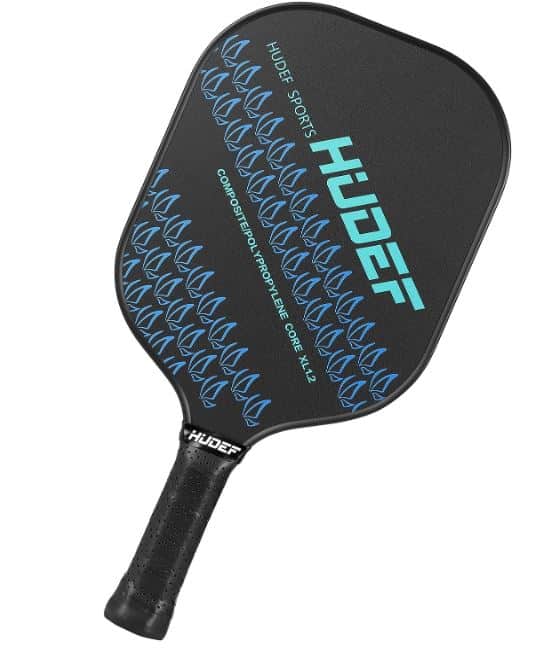
When considering a pickleball paddle, it’s important to keep in mind the materials it’s made of.
Many paddles are made from a blend of materials like graphite, aluminum, and fiberglass, which can provide a great mix of power and control.
They have a larger sweet spot than wood paddles, making them ideal for beginners.
Wood Paddles:

These paddles are made of maple, birch, or basswood, and are usually lighter and more maneuverable than composite paddles.
They normally have a smaller sweet spot, making them better suited for more experienced players.
Graphite/Carbon Fiber Paddles:
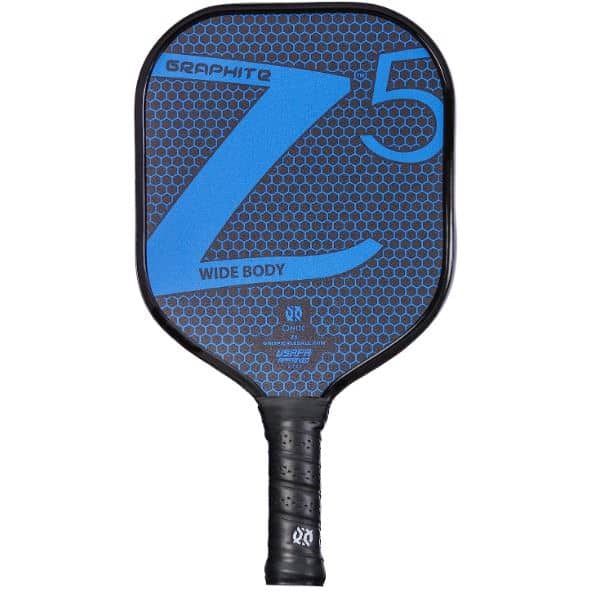
These paddles are made from graphite or carbon fiber, and they offer a great combination of power, control, and touch.
They are quite expensive than other types of paddles, but they offer excellent performance for more advanced level players.
Moreover, it is important while choosing the right pickleball paddle to consider your level of skills, price, and playing style.
Shapes and Sizes of Pickleball Paddles:
In pickleball, it’s crucial to adhere to regulations regarding paddle shape and size.
According to official USAPA guidelines, the length and width of a paddle, including the edge guard and handle cap, must not exceed 24 inches.
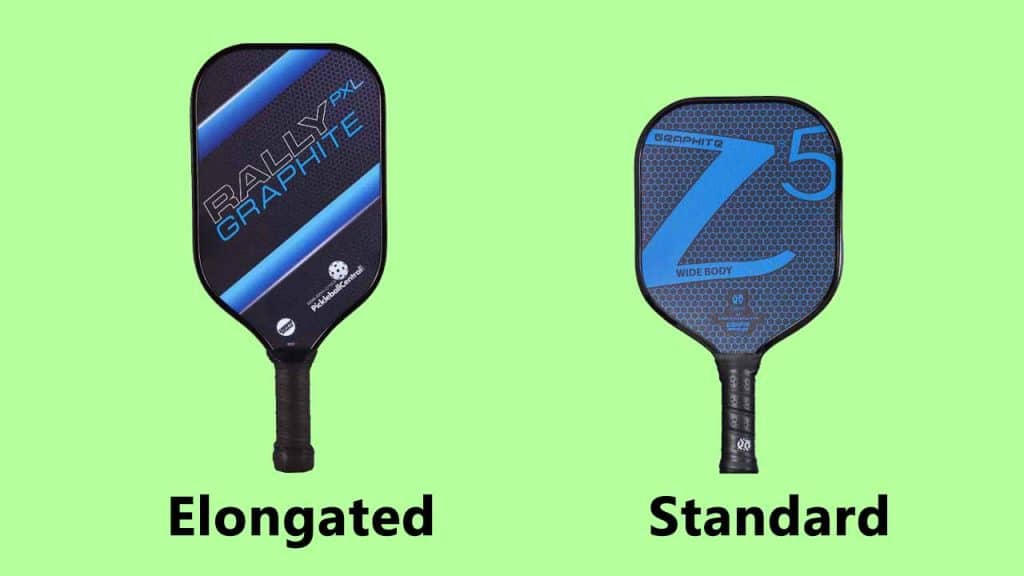
There are three primary paddle types:
- Standard
- Elongated
- Long-handled
1. Standard Paddles:
The standard, or wide-body, pickleball paddle is 16 inches long and 8 inches wide, providing a well-balanced combination of control, reach, and power.
This makes it an excellent option for beginners, as it offers a larger ball contact area.
2. Elongated Paddles:
An elongated paddle, ranging from 16-17 inches in length and narrower than a standard paddle, is ideal for those looking for extra reach, power, and spin. However, it may offer less control.
Players who use a two-handed backhand often prefer paddles with longer handles. Although these paddles have larger shapes, they have smaller faces.
3. Oversized Paddles:
Oversized pickleball paddles have a shorter handle and a longer face, designed to enlarge the sweet spot by providing more space to hit the ball.
Right Weight and Balance for Your Pickleball Paddle:
To enhance your pickleball game, it’s important to choose the right weight and balance for your paddle.
Weight:
Choose a paddle that is easy to hold, neither too heavy nor too light. A good weight range is between 7 and 9 ounces.
Balance:
The head weight of the paddle is the most important factor in finding the right balance. Pick one with a head weight that is comfortable for you to control.
As a beginner, it’s helpful to try out various paddles to see what works best for your game.
Grip Size:
The grip size is another crucial factor to consider. Your hands should comfortably wrap around the grip without your fingers hanging off the end.
The standard grip size range in pickleball is 4 to 5 inches, measured from the middle of the handle.
You can select a grip size by either using a known tennis racquet grip size or measuring your hand from the tip of your ring finger to the middle crease of your palm.
Below is a table for Pickleball paddle grip size recommendations based on different skill levels of players:
| Skill Level | Grip Size (circumference in inches) |
|---|---|
| Beginner | 4 1/4 – 4 3/8 |
| Intermediate | 4 1/8 – 4 1/4 |
| Advanced | 4 – 4 1/8 |
| Professional | 3 7/8 – 4 |
Different Grips and Handles of Pickleball Paddles:
When it comes to pickleball paddles, there are several options out there, and understanding the different types of grips and handle styles ensures you find the perfect paddle for your game!
Grip Shape:
The round handles are the popular ones, as they offer a comfortable grip for the entire hand.
On the other hand, the tapered handles are commonly used for professional quality paddles, as they provide a better fit for your fingers.
Grip Size:
Most of the paddles come in three grip sizes; small, medium, and large.
Smaller grips are best suited to kids, whereas the medium and large ones are more comfortable for adults.
Grip Material:
The paddles are made of either rubber or foam; rubber grips offer plenty of comfort, while foam handles provide a secure grip.
Which grip and handle style suits you better? You need to try different paddles to get an idea of which one fits you better!
Different Pickleball Paddle Edge Protection Options:
When selecting a pickleball paddle, prioritize edge protection to increase its longevity and avoid damage.
Edge protection prevents the paddle from chipping or cracking, and it helps to increase the shot power.
Following are the different edge protection choices available.
Edge Tape:
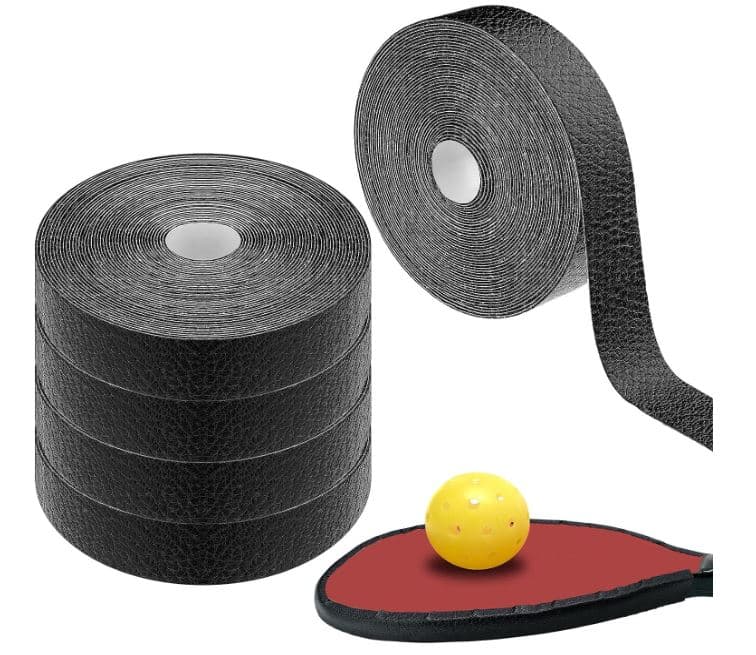
Edge tape is the most famous option, as it provides better protection and also makes the paddle to be lightweight. Another benefit of the edge tape is it reduces the vibration and gives the paddle a comfortable feel.
Edge Guard:
Edge guards are made of a heavy rubber material, which also helps to protect the edges of the paddle from cracking.
Edge Caps:
Using edge caps on your pickleball paddle is essential to protect it from damage and extend its lifespan. These plastic caps fit snugly over the edges and provide an extra layer of defense against scratches and scrapes.
Price:
Price is always an important factor to consider, especially when you are buying paddles to up your game.
You don’t need to spend a fortune to buy a good paddle, but you also don’t need to compromise on quality.
Conclusion:
Choosing the right pickleball paddle may seem challenging, but it becomes easier when you have knowledge of various types of paddles and their distinctive features.
By knowing the technical details outlined in this article, you will be able to make an informed choice.
When buying paddles, remember to consider factors like weight, grip size, material, and surface texture.
With the right pickleball paddle, you can elevate your game to a higher level.

It’s me Joe, a devoted pickleball enthusiast, and an avid player, I’m passionate about sharing the joy and excitement of the game through my Pickle Ball Routine. With years of experience on the court, I have honed my skills, explored various strategies, and developed a deep understanding of the nuances of pickleball.
I believe in the power of community and the incredible connections that can be forged through pickleball. I have had the privilege of engaging with players of all levels, from beginners seeking guidance to seasoned athletes looking to enhance their gameplay. My friendly and approachable demeanor makes me a valuable resource for players of all backgrounds.
Through Pickle Ball Routine, I aim to inspire and educate fellow pickleball enthusiasts. By sharing personal experiences, tips, techniques, and stories from the game, I strive to create a platform that fosters growth, camaraderie, and an unyielding passion for pickleball.
